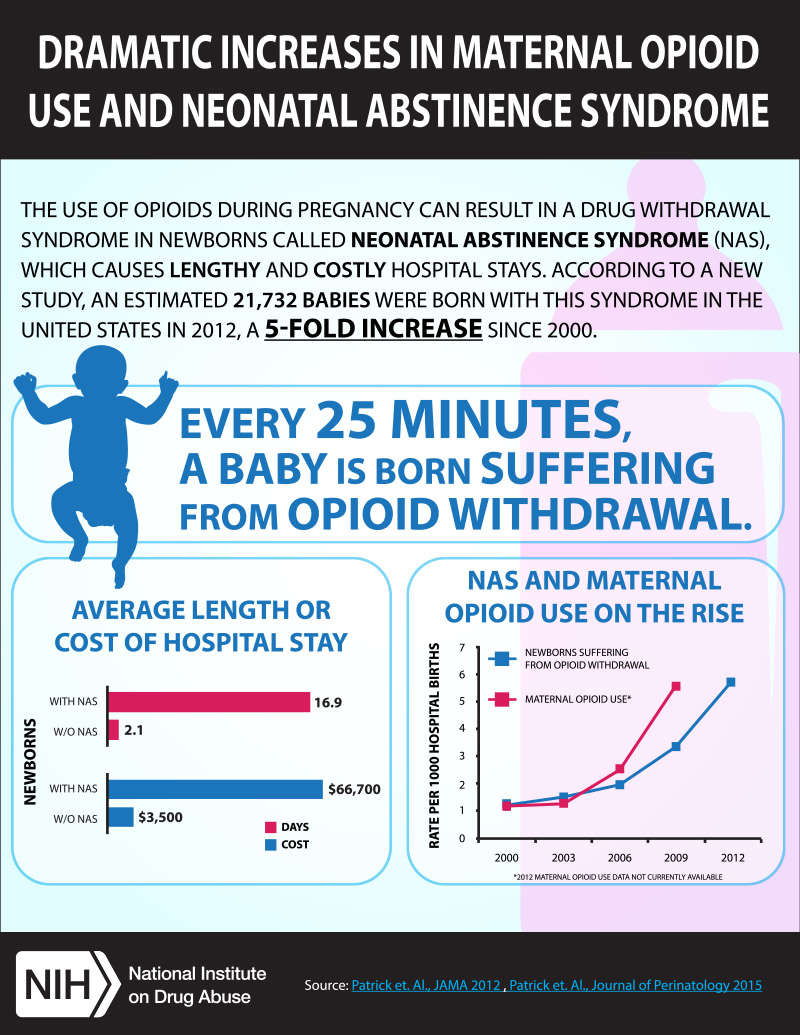New Framework to Curb Births of Babies Born Dependent to Drugs

The abuse of prescription drugs is a national problem. Sadly, it’s not just adults that are afflicted by this troublesome trend. Over 20,000 babies are born each year dependent on illegal or prescription drugs and suffer neonatal abstinence syndrome (NAS), a type of opiate withdrawal. That’s the equivalent of one baby every 25 minutes.1,2
NAS is a group of problems such as body shakes, trouble sleeping, breathing problems, poor feeding and more, that occur in newborns exposed to addictive opiate drugs while in utero. Instances of NAS quadrupled between 2004 and 2013.3 It resulted in 7-fold increases in neonatal intensive unit care stays.3 There is also potential for long-term health and development issues as the baby grows.
“It’s not as simple as just helping these babies survive. To really address the issue of NAS, we need to have multisector coordination to help mothers before and during and after pregnancy,” says NICHQ Chief Science Officer Joann Petrini, PhD, MPH.
There is little consensus about the best way to diagnose and treat opioid addiction in women and infants. The Association of State and Territorial Health Officials (ASTHO) released an issue brief in 2015 with strategies for how state health departments could use various prevention methods to address NAS. Now, as part of the NICHQ-led Collaborative Improvement and Innovation Network to Reduce Infant Mortality (Infant Mortality CoIIN), ASTHO is releasing a NAS framework to support stakeholder discussions at the state level to better understand how collective efforts can prevent in-utero opioid exposure and impact the incidence of NAS.
“Working to identify approaches to effectively identify, treat and follow up with women with substance use disorders and their infants is necessary to build a system supportive of families,” says NICHQ Project Director Zhandra Leveque, MPH. “Ultimately this will enable us to reduce the number of NAS cases.”
View the Neonatal Abstinence Syndrome Framework
Sources:
1 Patrick SW, Schumacher RE, Benneyworth BD, et al; Neonatal Abstinence Syndrome and Associated Health Care Expenditures, United States, 2000-2009; JAMA. 2012;307(18):1934-1940. doi:10.1001/jama.2012.3951
2 Patrick SW, Davis MM, Lehman CU, Cooper WO. Increasing incidence and geographic distribution of neonatal abstinence syndrome: United States 2009 to 2012. J Perinatol. 2015 Aug;35(8):667. doi: 10.1038/jp.2015.63.
3 Anand, KJS and Campbell-Yeo M. (2015), Consequences of prenatal opioid use for newborns. Acta Paediatr, 104: 1066–1069. doi:10.1111/apa.13121
